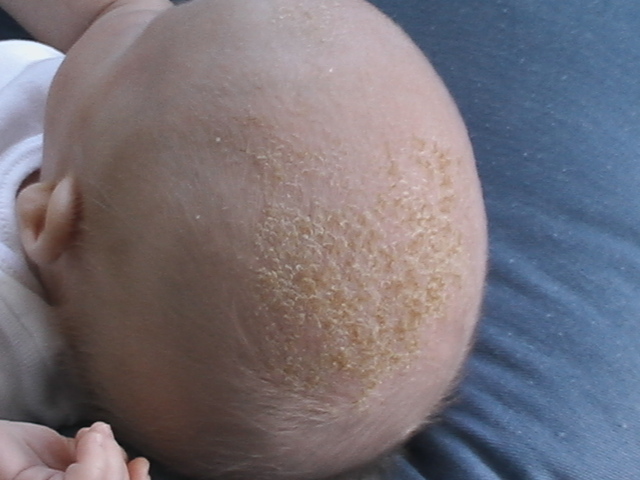What are "cradle cap"?
Called seborrheic dermatitis by the medical, cradle cap slightly reminiscent dandruff hair. They are red patches on the scalp of the baby, covered dead skin flakes (dander), yellow and greasy. Over time, the scales become scaly and stand at rubbing, a bit like dandruff, but they sometimes include small tufts of hair. Cradle cap can completely cover the scalp of the child, or appear on the face, in the genital area, under the arms or nose; these forms are then often called "seborrheic dermatitis". Seborrheic dermatitis is very common in babies younger than eight months. It usually appears during the first three months and may persist for weeks or months. Older babies and young children can also be affected. Although the appearance of these plates is unsightly, they do not cause itching or discomfort for your baby. This dermatitis is not serious and there is no reason to worry.
What is the cause of cradle cap?
Cradle cap could be due to persistence of pregnancy hormones in the mother's body after baby birth. These hormones stimulate the sebaceous glands present in the skin and fat production would stick the dead skin cells in the scalp of the baby. These secretions diminish over the weeks and months after birth and cradle cap usually end disappear themselves. They are often associated with a family history of allergic diseases such as eczema , And other seborrheic dermatitis which appear later, as the capillary films, for example.How long is seborrheic dermatitis?
Plates usually disappear on their own in the first months after birth, often before the child is two years. In some cases, they may persist or reappear for longer.What to do to treat cradle cap?
There are several methods to try to gently remove scaly patches:• Regularly wash your baby's hair with a shampoo for infants and gently loosen the scales with a soft brush.
• Dab your baby's scalp with almond oil or olive oil and let it sit (overnight if you wish). Then brush to remove dander and remove the remaining oil by washing the child's hair with a mild shampoo for babies.
In some cases, cradle cap can ignite and become infected. Your doctor will prescribe an antifungal cream then. It is very tempting to pull the cradle cap to remove the head of your baby, but it is better to abstain because it leaves bright plates may become infected. Cradle cap will disappear by themselves.
If they persist, worsen or spread on the face or the neck of the child, talk to your doctor.
Our Sponsors
Cheap Products for Home
Cheap Products for Sales
Cheap Auotomotive Products
Cheap Watches
Cheap Beauty Products
Cheap Camera Cheap Products for Baby
Cheap Clothes
Low Price Computers
Cheap Products for Garden
Cheap Products for Sports
Cheap Low Price Tools
Cheap Low Price Foods
0 comments on "Cradle cap in babies (seborrheic dermatitis)"
Post a Comment